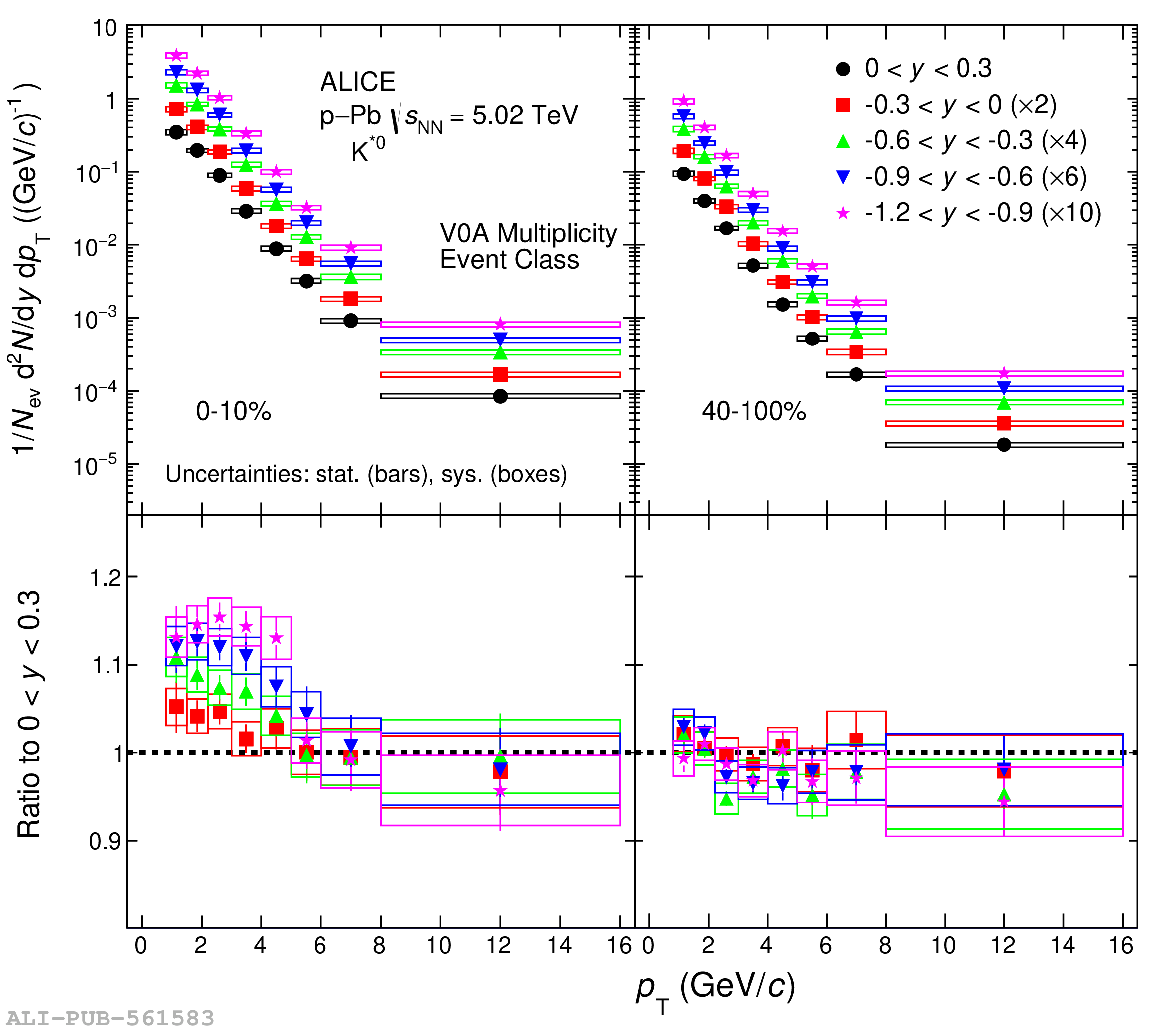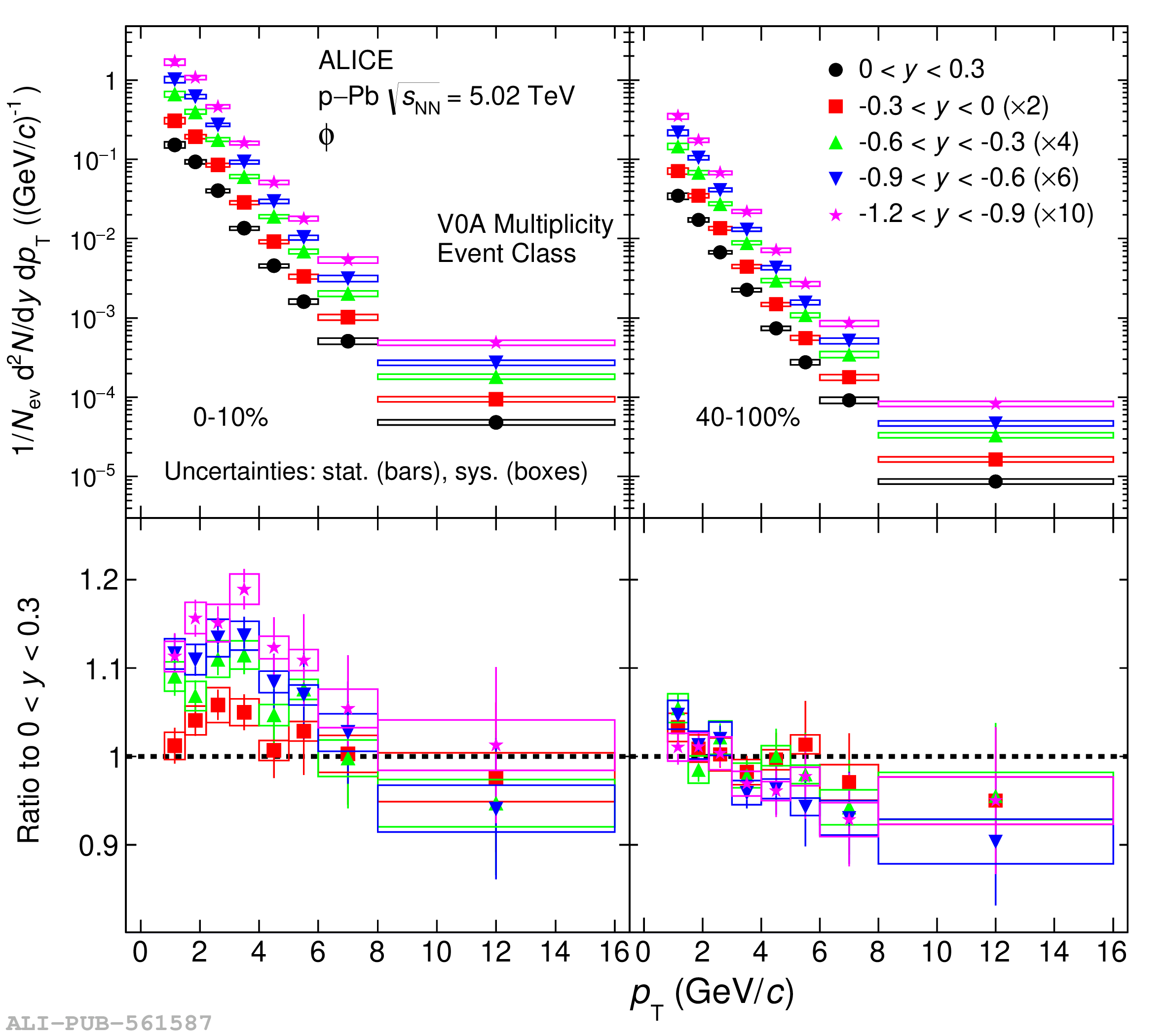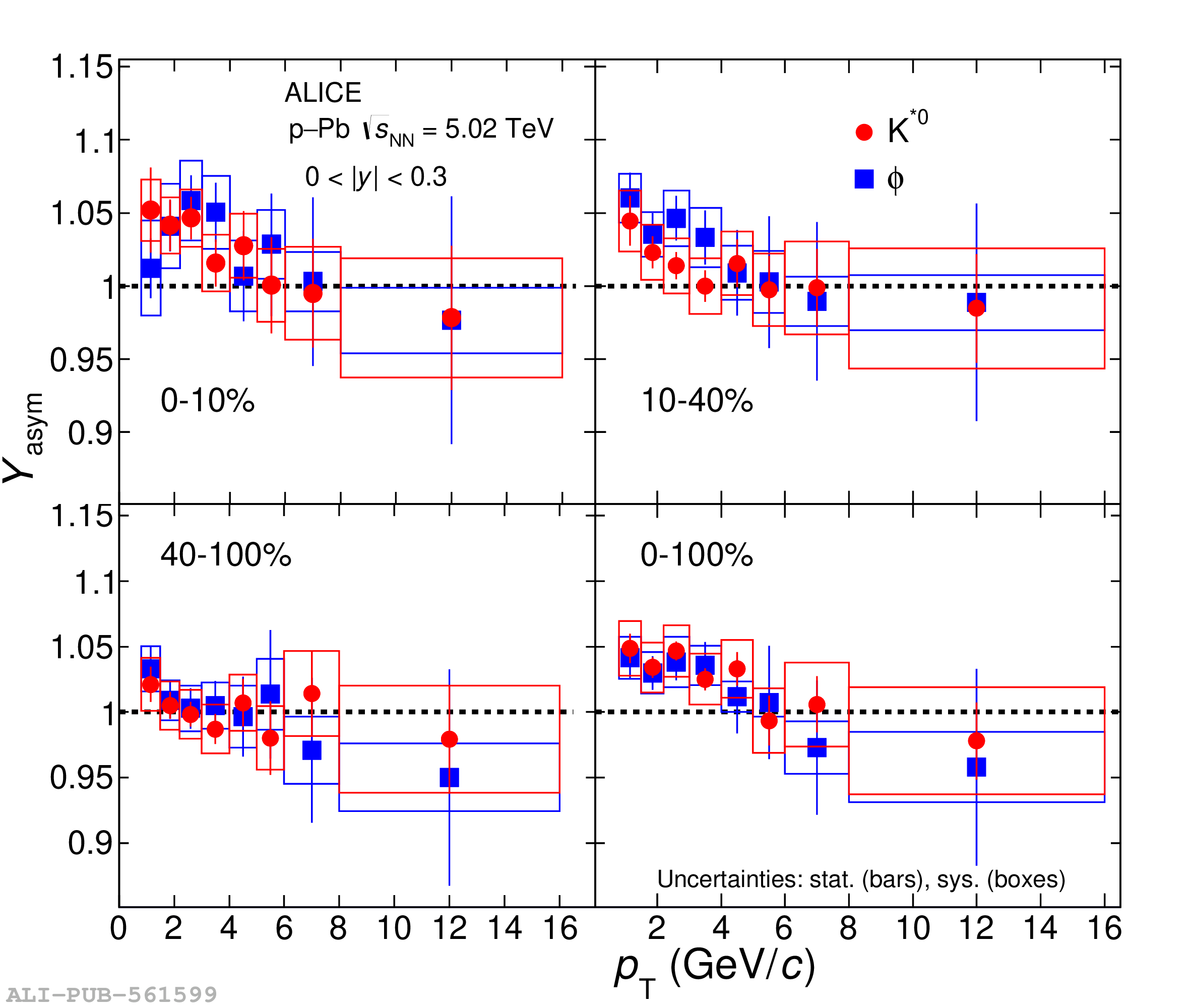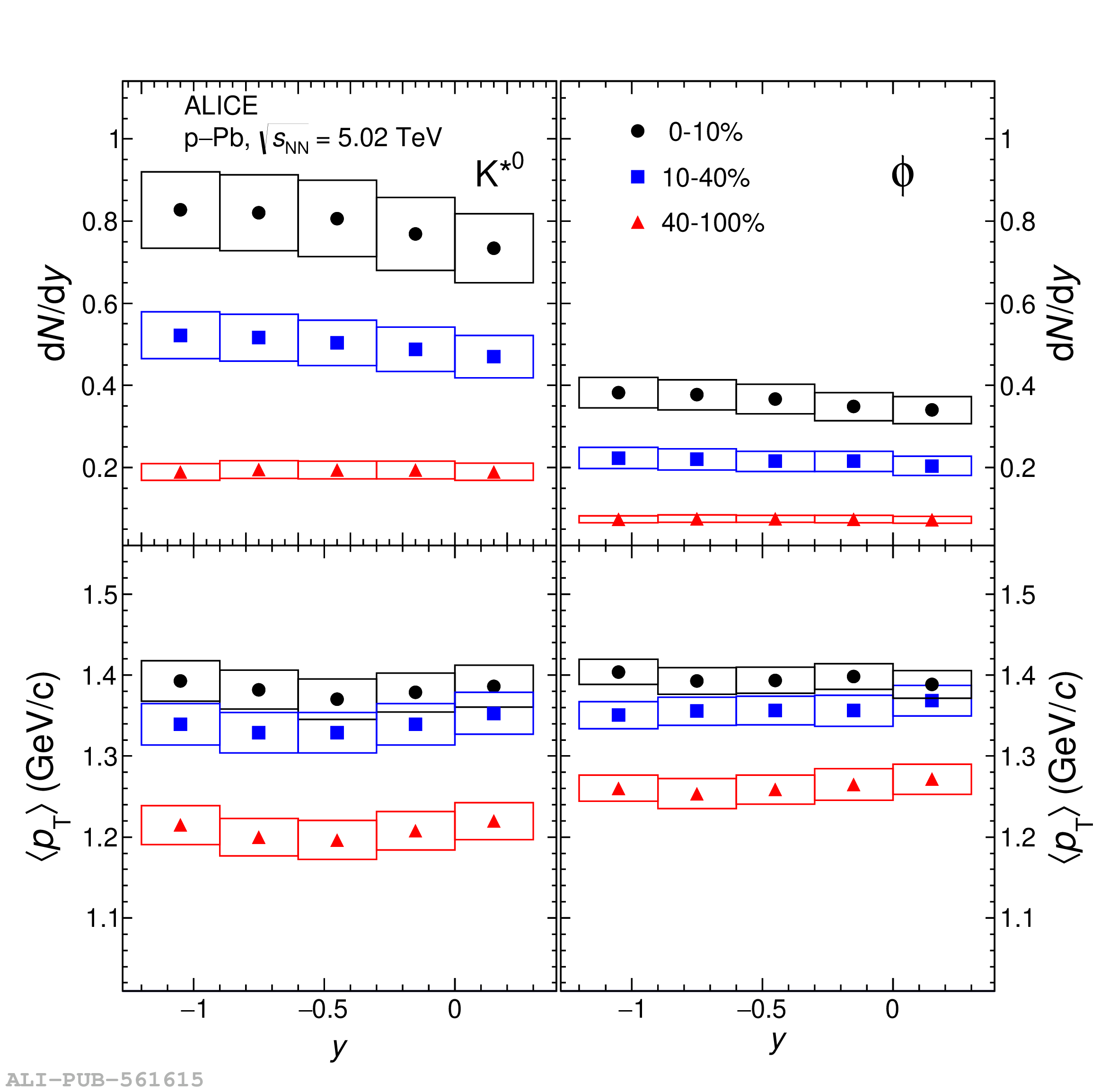The transverse-momentum ($p_{\rm T}$) spectra of ${\rm K}^*(892)^0$ and $\phi(1020)$ measured with the ALICE detector up to $p_{\rm T}$ = 16 GeV/$c$ in the rapidity range $-1.2 <~ y <~ 0.3$, in p-Pb collisions at the center-of-mass energy per nucleon-nucleon collision $\sqrt{s_{\rm NN}}$ = 5.02 TeV are presented as a function of charged particle multiplicity and rapidity. The measured $p_{\rm T}$ distributions show a dependence on both multiplicity and rapidity at low $p_{\rm T}$ whereas no significant dependence is observed at high $p_{\rm T}$. A rapidity dependence is observed in the $p_{\rm T}$-integrated yield (d$N$/d$y$), whereas the mean transverse momentum ($\left<~ p_{\rm T} \right>$) shows a flat behavior as a function of rapidity. The rapidity asymmetry ($Y_{\rm asym}$) at low $p_{\rm T}$ ( <~ 5 GeV/$c$) is more significant for higher multiplicity classes. At high $p_{\rm T}$, no significant rapidity asymmetry is observed in any of the multiplicity classes. Both ${\rm K}^*(892)^0$ and $\phi(1020)$ show similar $Y_{\rm asym}$. The nuclear modification factor ($Q_{\rm CP}$) as a function of $p_{\rm T}$ shows a Cronin-like enhancement at intermediate $p_{\rm T}$, which is more prominent at higher rapidities (Pb-going direction) and in higher multiplicity classes. At high $p_{\rm T}$ (> 5 GeV/$c$), the $Q_{\rm CP}$ values are greater than unity and no significant rapidity dependence is observed.
Eur. Phys. J. C 83 (2023) 540
HEP Data
e-Print: arXiv:2204.10263 | PDF | inSPIRE
CERN-EP-2022-067
Figure group










